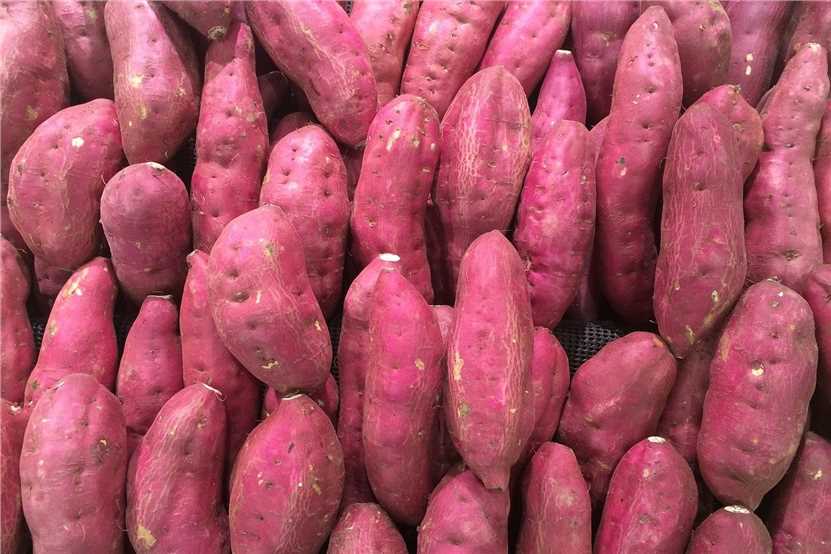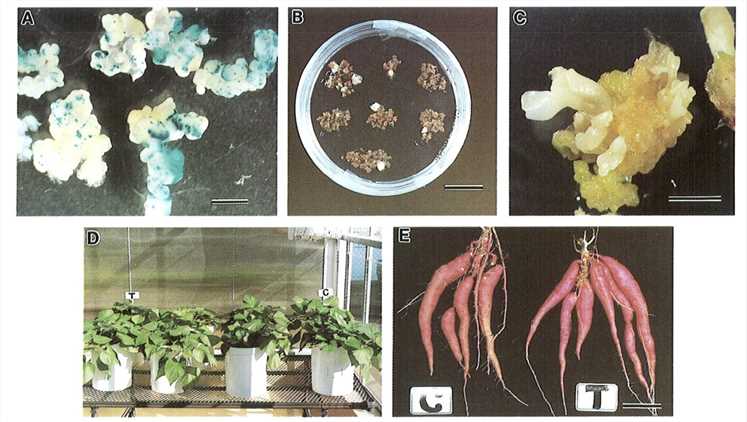Ipomoea batatas (L.) Lam., also known as sweet potato, is an herbaceous plant of the genus Convolvulaceae, which is widely cultivated in tropical and subtropical regions all over the world. Sweet potato is a high-yield and highly adaptable food crop, which is closely related to industrial production and people's life. In addition to be regarded as the main food, sweet potato is also an important raw material for food processing, starch, and alcohol production. Sweet potato tuber is rich in protein, polysaccharides, phosphorus, potassium, calcium, carotene, vitamin A, vitamin C, vitamin E and 8 kinds of amino acids. Ipomoea batatas (L.) Lam.'s protein content is more than 7 times that of rice, carotene content is 3.5 times that of carrots, and vitamin A content is 100 times that of potatoes. At the same time, its fat content is very low, but it has a very high content of unsaturated fatty acids, which is very suitable for dieters.
In order to further improve the nutritional value and industrial value of Ipomoea batatas (L.) Lam., reduce the cost of cultivation process, genetically modifications of Ipomoea batatas (L.) Lam. have been applied. With wealth experience in plant transformation, Lifeasible offer sweet potato transformation service to help you improve its tuber yield, cold tolerance, drought resistance, disease resistance, insect resistance, storage time, protein content, starch characteristic, etc.

Lifeasible provides one-stop services, covering all steps from experimental design, vector construction, plasmid transformation, positive transplant screening to transgenic Ipomoea batatas (L.) Lam characterization. We offer Ipomoea batatas (L.) Lam. transformation using various genetic engineering technologies as follows:
Gene overexpression refers to cloning a target gene into a vector carrying elements such as a strong promoter and resistance selection marker, and then introducing it into Ipomoea batatas (L.) Lam., so that the host cell will obtain a higher level of target mRNA transcription and protein expression. Therefore, the function of the gene can be studied through phenotypic analysis. We could help our customers overexpress many genes including herbicide-resistant glyphosate genes EPSPS, ALS, leaf variegated gene PDS3, gene AT114 that affect fatty acid composition in Ipomoea batatas (L.) Lam., and many other genes related to important traits of Ipomoea batatas (L.) Lam.
RNAi technology is widely used in the field of gene editing, it is a phenomenon of specific gene silencing mediated by double-stranded RNA (dsRNA) and involved in specific enzymes. It blocks gene expression at the transcription level and translation level. Through RNAi technology, we can achieve silencing of multiple genes in Ipomoea batatas (L.) Lam.
The VIGS technology is a method of transient transformation and its underlying molecular basis may be post-transcriptional gene silencing. Silencing and functional analysis of target genes in Ipomoea batatas (L.) Lam. through VIGS can help our customers save time and achieve valuable information for gene functional analysis. With wealth of experience in VIGS, our scientists in Lifeasible can provide you with customized protocol for VIGS in Ipomoea batatas (L.) Lam.
CRISPR gene knockout technology is currently the most widely used gene knockout technology, it provides us with a very powerful and convenient gene editing tool. As a leading company that has been deeply involved in the field of gene editing for many years, by CRISPR technology, we can knockout Ipomoea batatas (L.) Lam. genes in different ways, including frameshift mutations, multiple deletion of fragments, knockout of non-coding genes, knockout of multiple copies of genes, etc.
CRISPR system has strong scalability, and this scalability can be used to develop more useful gene editing tools. we have developed many methods that can improve gene knock-in efficiency and achieve precise editing of the Ipomoea batatas (L.) Lam. genome.
CRISPR single base editing technology has been widely used in the current field of gene editing. As a company that has been cultivating gene editing technology for decades, Lifeasible could help you achieve the conversion from C to T or A to G in Ipomoea batatas (L.) Lam. using CBE and ABE, both of which rely on the fusion of dCas9 to a deaminase.
CRISPR interference (CRISPRi) is a popular method to participate in the inhibition of gene expression. For the inhibition of Ipomoea batatas (L.) Lam. genes, we can provide a variety of solutions like dCas9 binding to targeted DNA and realizing Inhibition of gene transcription through steric hindrance. In addition, gene knockdown can also be achieved by recruiting a fusion protein to the start site of gene transcription.
CRISPRa technology uses the powerful capabilities of Cas9 and sgRNA to fuse or recruit multiple proteins to enhance gene transcription. For Ipomoea batatas (L.) Lam. genes, we provide VPR technology, SAM technology and Suntag technology to allow the CRISPR system to carry more activation element and achieve a stronger activation effect after synergistic amplification.
The study of gene function has always been the core subject of biological research. The earliest genetic screening system established through forward genetics is very inefficient and has a huge workload. However, the reverse genetic screening system based on CRISPR technology can complete very low-cost mutation library construction work. The gene mutation library construction technology we provide for Ipomoea batatas (L.) Lam. including gene knockout library construction, gene knockdown library construction, and gene activation library construction. Moreover, single-cell sequencing is available for mutation screening.
DNA-free gene editing technology has received extensive attention from the industry in recent years. We provide DNA free Ipomoea batatas (L.) Lam. genome editing services, including transient expression of CRISPR/Cas9 plasmid DNA, in vitro transcription of CRISPR/Cas9, and pre-assembled ribonucleic acid composed of purified Cas9 protein and sgRNAs complex. These technologies can avoid the integration of foreign DNA and genome, and reduce off-target effects. In addition, compared with traditional techniques, these techniques can avoid the use of hybridization or backcrossing to isolate CRISPR/Cas9 chimeras, so they are cheaper and have shorter experimental cycles.
Genetic Transformation Process for Ipomoea batatas (L.) Lam.
We provide Ipomoea batatas (L.) Lam. transformation by Agrobacterium-mediated method, which is the most advanced and widely used method for the development of genetically modified Ipomoea batatas (L.) Lam.. Briefly, the foreign target gene is transferred and integrated into embryogenic callus through Agrobacterium, and then genetically modified seedlings are screened and hardened to get transgenic plants with desired traits.
 Figure 1. Genetic Transformation Process for Ipomoea batatas (L.) Lam. by Agrobacterium, (A) Transient GUS expression in embryogenic callus of sweet potato after three days of co-cultivation with Agrobacterium, (B) Hygromycin-resistant cell clusters developing on the selection medium containing 25 mg/I hygromycin, (C) Numerous somatic embryos produced from hygromycin-resistant calli, (D) Transgenic plants (left three pots) and an untransformed plant (right pot) established in soil and grown for 2 months in a green house, (E) Storage roots formed on untransformed (left) and transgenic plants (right). (Otani M, et al. 1998)
Figure 1. Genetic Transformation Process for Ipomoea batatas (L.) Lam. by Agrobacterium, (A) Transient GUS expression in embryogenic callus of sweet potato after three days of co-cultivation with Agrobacterium, (B) Hygromycin-resistant cell clusters developing on the selection medium containing 25 mg/I hygromycin, (C) Numerous somatic embryos produced from hygromycin-resistant calli, (D) Transgenic plants (left three pots) and an untransformed plant (right pot) established in soil and grown for 2 months in a green house, (E) Storage roots formed on untransformed (left) and transgenic plants (right). (Otani M, et al. 1998)
Experts at Lifeasible obtain comprehensive knowledge and years of experience to solve technical problems and challenges in Ipomoea batatas (L.) Lam. transformation. our services guarantee the success of your project. For more information or any inquiry requirements, please contact Lifeasible.
Reference